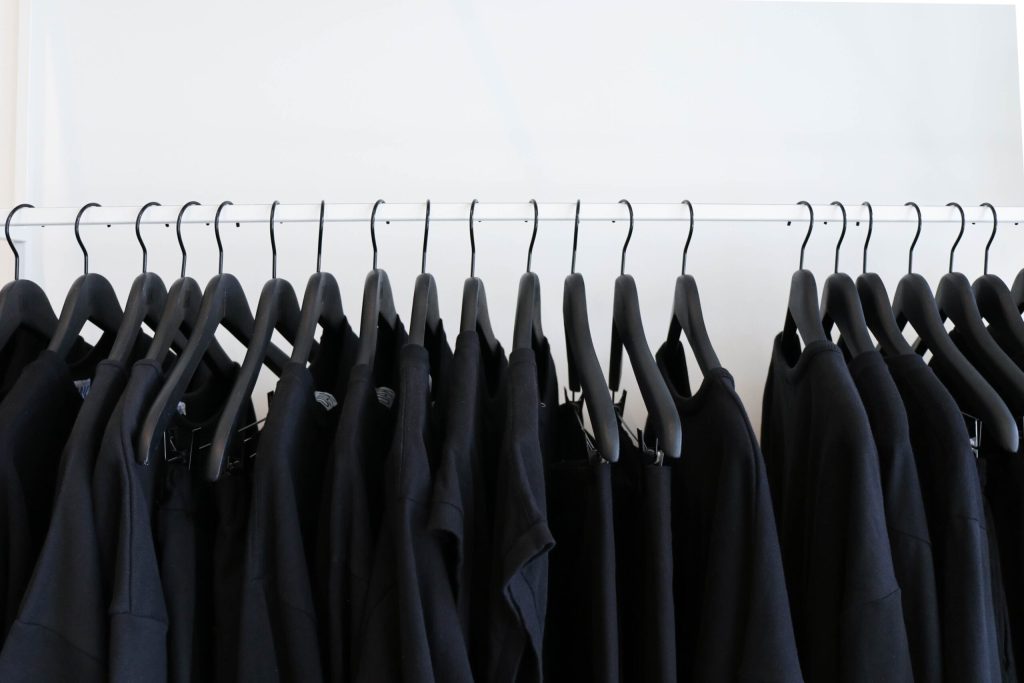Garment finishing is a very important part of the apparel industry. It includes many functions like removing unwanted creases and crinkles from garments. It also includes some chemical treatments like softeners, soil-release finishes and UV finishes.
The other function of this department is to inspect the garments. Buyer checks the garments according to some rules. After that, the garments are pressed and then folded. Then they are put into cartons.
1. Thread Sucking
Thread Sucking is a necessary euqipment for garment factories to reduce loose threads on the finished apparel. This machine uses high vacuum for sucking all the loose threads in garments and collect them in the collection device. It has transparent work plate for operators to see the working pieces during process. With dual turbine and special sucking design, it can double the sucking effect.
Garments are received from sewing section as per color, size & style and then move to finishing section for further processing. In this stage extra loose sewing threads are sucked by the thread sucking machine and it also helps for further process of ironing.
Our machines are specially designed to successfully meet the operational requirements for sucking loose thread from garment before trimming. It features a metal fabricated & hot painted main body with airtight cladding, which is quickly removable for easy access to blower motor, garment trap, strainer & control box.
2. Ironing
Ironing is the process of subjecting fabric to heat and pressure, usually with steam, in order to remove creases and impart a flat appearance. This is one of the most important operations in apparel finishing.
Always be careful when pressing delicate fabrics like silk and cotton. Pressing too hard can damage them and lead to discolouration. When pressing a seam, avoid pressing over any pins or stitching. At best, they’ll leave dents in the fabric and at worst, they can melt or burn your iron.
If you’re pressing a curved seam, place a sleeve board (available at sewing shops) underneath it to help maintain its shape. Also, remember to lower and lift the iron when ironing. Doing this consistently and carefully can make a huge difference in how your clothes look when they’re finished.
3. Thread Trimming
The quality of garments is very much dependable on the finishing section. The proper finishing process helps in achieving on time order shipment.
A thread trimmer is an automatic machine that cuts off extra sewing threads hanging on the finished product. This saves time, effort and labor cost. It also reduces the risk of mistakes by eliminating manual steps and allows operators to keep a high work flow.
The tenacity of a thread is a major factor in its ability to resist damage during the processing and finishing of a garment. CS cotton threads have higher tenacity than CP or polyester and are available in a variety of finishes including soft, mercerized, and glaced. Other finish features include NWT (new wash technology) which is designed to minimize repairs due to harsh finishing processes like enzyme and stone-washing of denim fabrics.
4. Inspection
Garments are inspected before shipment. During this process, the buyer checks garments according to some rules like acceptable quality level (AQL). If any product exceeds the set limit it may be rejected or returned for recheck.
The major defects in the finishing department may be due to spreading, cutting of fabrics, pattern matching, thread color & interlining. All these defects can be easily controlled by in-process inspection. It reduces the major’surprises’ from buyers & also saves labor cost.
Final inspection may be done after or before packing of garments. This includes checking of all styles, sizes & colors; size measurements; formfitting (putting garments on proper size dummies to see that they properly fit labeled sizes); and live modeling if needed. The garments are then packed and warped in cartons & labelled for shipping.
5. Packing
After final inspection and ironing, the garments go for packing. This is a critical step as it helps the company to make on time shipment for orders.
In this process, the garments are packed in a carton box and are labeled. Usually, the packaging is done by following buyer’s instructions.
Depending on the type of garment, it is packaged in different ways. For example, shirts are packaged in a carton that is shaped like a dead body called “dead man pack”.
Other common packing methods include sleeve-packing (where the sleeves of the garments are folded) and flat-packing (where the garments are laid out and pinned together). In addition to these processes, finishing department also does the printing of labels for a garment. It also does the attaching of stickers and tags.


